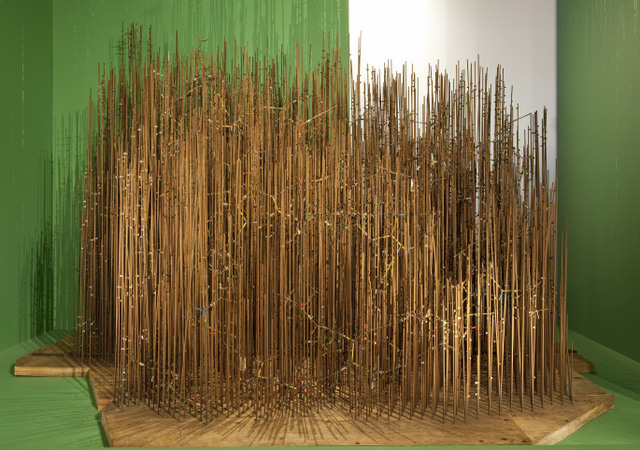How Churchill Used Science To Win World War II
Last Updated 28 January 2015






Londonist Rating: ★★★☆☆
Think Winston Churchill and the mind goes straight to his powerful wartime speeches and leadership — science and technology may not be at the forefront of most people's thoughts. But Churchill was a massive proponent of this area both during the second world war and for civilian use afterwards. The latest display at Science Museum is all about Churchill's use of science with a focus on the scientists who assisted and carried out his vision.
The first half of the exhibition illustrates programs that took place in the war, including the use of weapons to defend against u-boats, the strategic bombing of railways to disrupt enemy supply lines and the use of statistical analysis to determine how long resources would last.
This is all fascinating information but the lack of attention-grabbing artefacts does result in an informative but rather dry first half, the one exception being a fantastically-contoured bust of Churchill by Jacob Epstein.
The second half of the exhibition is based around Churchill's second stint as prime minister and includes his annotated draft of his book on the Second World War and even the victory cigar he smoked to celebrate his re-election.
There are better artefacts available for this part of the display, including footage of Britain's testing of a nuclear bomb and a robot that was used to inspect the earliest civilian nuclear reactors. The use of wartime technology during peacetime is probably a narrative less familiar to visitors and it is very interesting.
This is an informative display covering an aspect of Churchill we weren't too familiar with, and gets stronger as the exhibition progresses.
Churchill's Scientists is on at Science Museum until 1 March 2016. Admission is free.
Also still on at the Science Museum is the history of photography in Drawn by Light and the horrors of 60's and 70's social housing in Make Life Worth Living. While at the Science Museum, make sure you also check out the new Information Age gallery.
In more Churchill related news, the 50th anniversary of his death will be marked with a river procession.




